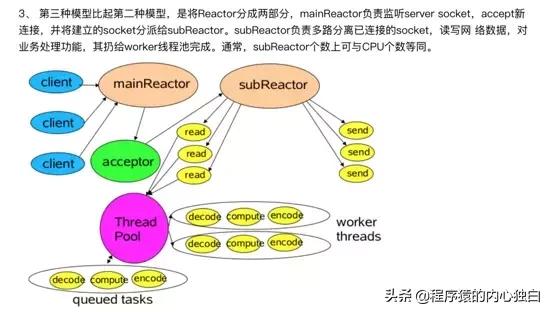仁爱英语八上单词巧记(仁爱英语G7-U1-Topic3How)
讲义Unit 1 Making New FriendsTopic 3 How old are you?,下面我们就来说一说关于仁爱英语八上单词巧记?我们一起去了解并探讨一下这个问题吧!

仁爱英语八上单词巧记
讲义Unit 1 Making New Friends
Topic 3 How old are you?
目标导学
项目
知识要点
核心词汇
twelve year old class in grade eleven thirteen fourteen fifteen sixteen seventeen eighteen nineteen twenty English an eraser map pen pencil desk spell a can apple toy try again those book these let help ruler car egg orange bus box now school his same but friend high
常用词组
Class Four四班 Grade Seven七年级 year(s) old...岁 how old...几岁了 in English用英语 try again再试一次 in the same class在同一班级 good friend好朋友 ID number身份证号码 junior high school初中
语音要点
元音音素/aɪ/ /ɪ/
辅音音素/f/ /v/ /m/ /n/ /s/ /z/ /h/
重点句型
1. —How old are you?你多大了?
—I’m twelve (years old).我也12岁了
2. —What class are you in?你在哪个班?
—I’m in Class Four, Grade Seven.我在七年级四班。
3. —What grade are you in?你在哪个年级?
—I’m in Grade Seven.我在七年级。
4. —What’s this / that in English?这个用英语怎么说?
—It’s an eraser / a map.它是一块“橡皮”/一张地图。
5. —How do you spell it?你怎么拼写它?
—E - R- A - S - E - R, eraser.E-R-A-S-E-R,橡皮
6. —Can you spell it, please?你能拼写它吗?
—Yes. M - A - P, map.能,M-A-P,地图
7.—Thanks. / Thank you.谢谢。/谢谢你。
—That’s OK. / You’re welcome.不用谢
8. —Is this/that a/an... ?这是一个……吗?
—Yes, it is. / No, it isn’t.是的,它是/不,它不是
9. —Are these/ those... ?这些是…….吗?
―Yes, they are. / No, they aren’t.是的,它们是。/不,它们不是。
10. —What are these / those?这些/那些是什么?
—They’re...它们是……
语法精粹
1. 指示代词: this/that/these/those的用法
Who’s that?那是谁?
Is this/that a/an ...这是/那是一个……吗?
What are these/those?这些/那些是什么?
2. 名词复数
They are books/rulers and pencils.它们是书/尺子和铅笔。
3. a与an的区别
It’s a map.它是一张地图。
It’s an eraser.它是一块橡皮擦。
学海导航
考点剖析
【考点1】—How old are you? 你多大了?
—I’m twelve, too. 我也十二岁了。
old adj.意为“旧的;老的”。
how old是询问年龄的习惯表达方式,回答时使用人称 be 基数词 (years old)或直接用基数词。如:
How old is your good friend? 你的好朋友多大了?
He is twelve(years old). = Twelve. 他十二岁。
【拓展】反义词: new新的young年轻的
【考点2】—What class are you in ? 你在哪个班?
—I’m in Class Four, Grade Seven. 我在七年级四班。
在英语中,一般把较小的地点放在较大的地点之前,表示班级的名词和数词的首字母都要大写。如: Class Four, Grade Seven是专有名词,首字母要大写。类似的表达法有:Room Eight 8号房,Building Nine 9 号楼,Number One 1号,Row One 1排等。而问句中grade/class用作普通名词则不必大写。如:What grade/class …?
【考点3】—Who’s that? 那是谁?
—That’s Nancy. 那是南希。
who意为“谁,什么人”。如果询问“这是谁?”/ “那是谁?”,分别用 Who is this? /Who is that? 它们的缩写形式是: Who’s this?/Who's that? 其回答分别为: This is ... /That is (That’s) ...注意This is不能缩写。如:
—Who is( Who's) this? 这是谁?
—This is Kate. 这是凯特。
—Who is (Who’s) that ? 那是谁?
—That is (That’s) Jenny. 那是珍妮。
【考点4】—Excuse me, what’s this/that in English?
这个/那个用英语怎么说?
—It’s …它是……
(1) 指示代词:表示“这,这个”(this),“那,那个’’ (that),“这些”(these),“那些”(those)等指示概念的代词叫指示代词。
(2) this一般用来指在时间或空间上较近的事物;that则指时间或空间上较远的事物。如:
This is my teacher. 这位是我老师。
That is my mom. 那位是我妈妈。
(3) 第一次指代事物时用this或that,以后再提,则用it来代替。如:
This is a book. It is an English book. 这是一本书。它是本英语书。
That is your pen. It isn’t nice. 那是你的笔。它不好看。
(4) in English意为“用英语说”。介词in之后加语言名词,意为“用……语言说”。
【考点5】—How do you spell it? 你怎样拼写这个词?
—E-R-A-S-E-R, eraser. E-R-A-S-E-R,橡皮。
how意为“怎样,如何”,重点在于要了解事物发展进行的过程,因此答句中应体现某物的进展。
【链接】与此相似的一个句子是:
—Can you spell it, please? 请问你会拼写它 (这个词)吗?
—Yes. M-A-P, map. 是的。M-A-P,地图。
在这里,先询问能力,后关注过程,因此,先作肯定回答,后体现过程。
另外,How do you spell it? 是特殊疑问句,Can you spell it?是一般疑问句,用yes或no来回答。
【考点6】—Thank you. /Thanks. 谢谢。
—That’s OK. /You’re welcome. 不用谢。
在英语中表示感谢用Thank you.或Thanks.而接受了感谢后,用英语说是That’s OK.或You’re welcome.意为“不用谢”,“没什么”。
【拓展】“不用谢”,“没什么”用英语还可说成:That’s all right. /Not at all. /It’s a pleasure.
【考点7】—What are these/those? 这些/那些是什么?
—They are books. 它们是书。
These是this的复数形式,those是that的复数形式,接be动词时使用其复数形式are。问句中的these/those在答语中要用they代替。
【考点8】Huang Hua and Jane are not in the same class, but they are good friends. 黄华和简不在同一个班,但他们是好朋友。
(1) same adj.意为“同样的;同一的”。使用same时,习惯在其前面加定冠词the。如:
We are good friends and we study in the same school. 我们是好朋友,我们在同一所学校念书。
(2) but意为“但是,可是”,是表示转折关系的连词,而前面学过的and表示并列关系。注意区别使用。如:
I’m 14 years old, but he is 13. 我14岁,可是他才13岁。
I’m from China and she is from China, too. 我来自中国,她也来自中国。
【考点9】a, an的用法及区别
a与an是不定冠词,意为“一个”,只能用在单数可数名词前面,表示一个或某一类人或事物。
a用于以辅音音素开头的单数可数名词之前。如:ruler/ˈru:lə/,box /bɑ:ks/, pen/pen/,这里/r/, /b/, /p/是辅音音素,因此用 a ruler, a box, a pen。
an用于以元音音素开头的单数可数名词之前。如: egg/eg/, apple/ˈæpl/,这里/e/,/æ/是元音音素,因此用an egg, an apple。
【即时演练】
用a,an填空。
1. class 2. English name
3. telephone 4. old box
5. desk
【考点10】可数名词
在这个话题中,我们学到的apple, map, desk, orange等名词可以用数来计算,我们把它们称为可数名词,个体名词与集体名词一般都是可数名词。
可数名词有单数和复数两种形式。单数名词前面可用冠词a/an;复数名词有词形变化。如:
(1)一般在名词词尾加-s,-s在清辅音后读/s/,在浊辅音和元音后读/z/。如:
an egg(—个鸡蛋) two eggs (两个鸡蛋)
(2)以s、x、sh、ch结尾的名词变复数时,在词尾加-es,-es,读/ɪz/。如:
a bus(一辆公共汽车) three buses (三辆公共汽车) a box(—个盒子) ten boxes (十个盒子)
(3)以f或fe结尾的名词变复数时,要把f或fe变成v,再加-es,-ves,读/vz/。如:
a knife(一把小刀) seven knives(七把小刀)
(4)以辅音字母加y结尾的名词变复数时,要把y变成i,再加-es,-ies,读/ɪz/。如:
a family (一个家庭) two families (两个家庭)
(5)以o结尾且该名词为生物类名词的,多在词尾加-es,也有特例加-s,-es,读/z/,-s也读/z/。如:
a tomato(一个西红柿) three tomatoes (三个西红柿)
a photo(—张照片) two photos(两张照片)
(6) 还有一些不规则变化。如:
a man(一个男人) two men(两个男人)
a woman (一个女人) ten women(十个女人)
a foot(一只脚) two feet(两只脚)
【即时演练】
把下面的名词变成复数形式。
1. teacher 2. name 3. class
4. grade 5. book 6. city
7. toy
即时演练参考答案:
[考点9] 1. a 2. an 3. a 4. an 5. a
[考点10] 1. teachers 2. names 3. classes
4. grades 5. books 6. cities 7. toys
巧学妙记
1.名词变复数歌诀
名词单数变复数,一般词尾加-s;
几种情况较特殊,s前边要加e;
词尾s, x, sh, ch,还有字母o结尾;
y前如是辅(音)字母,变y为i,再加-es;
遇到f或fe,变成ves别忘记;
还有几个不规则,单词记忆也省力;
中日友好不变化,英法联军a变e。
【说明】表示某国人,通常在单数后面加s。但是Chinese(中国人),Japanese(日本人)单复数一样,Englishman (英国人)和Frenchman(法国人)只需把a变为e,即Englishmen和Frenchmen。
2.巧记以o和f/fe结尾的名词复数
(1)英语中以o结尾的名词,在变为复数时,一般要在名词后加es。如:
Negroes are heroes, and they live on potatoes and tomatoes. 人是英雄,他们以马铃薯和西红柿为食。
(2)英语中某些以f,fe结尾的名词,在变为复数时,要把f或fe变为v,再加es。如:
life—lives (生命) knife—knives (小刀,刀子)
shelf—shelves (架子) half—•halves (一半)
wife—wives (妻子) wolf—wolves (狼)
leaf—leaves(树叶) thief —thieves (贼,小偷)
self—selves (自己)
顺口溜:
树叶半数自己黄, 树叶:leaf—leaves
半:half—halves
自己:self—selves
妻子拿刀去割粮。 妻子:wife—wives
刀:knife—knives
架后窜出一只狼, 架:shelf—shelves
狼:wolf—wolves
就像盗贼逃命忙。 贼:thief—thieves
命:life—lives
但有些词,如:grief,roof等变复数时,只在词尾加s。
经典探究
【典例1】—What are these?
—They are .
A. book B. a book
C. two book D. two books
【解析】D根据题意可知,应该用复数名词,表示两个或两个以上的人或物时,名词要用复数形式。
【典例2】This is ruler and that is eraser.
A. a, a B. an, an C. a, an D. an, a
【解析】C an用在以元音音素开头的单数可数名词前,a用在以辅音音素开头的单数可数名 词前,ruler/ˈru:lə/是以辅音音素开头的,eraser /ɪˈreɪzə(r)/是以元音音素开头的。
【典例3】—What class is Tom in?
—He is in .
A. class 4,grade 7 B. grade 7,class 4
C. Class 4,Grade 7 D. Class 4, grade 7
【解析】C英语中提到班级、年级时,可以按照由小到大的顺序。另外,因为班级、年级是专有名词,所以跟数字时单词的首字母须大写。
【典例 4】— is her friend?
—He’s 20 years old.
A. How B. How old
C. What D. Where
【解析】B这里考查疑问词的用法。用how old来问年龄。
【典例5】—Are your books?
—Yes, are.
A. these; those B. they; these
C. those; these D. these; they
【解析】D上文出现的these或those,下文要用they来替代,以避免重复。
,免责声明:本文仅代表文章作者的个人观点,与本站无关。其原创性、真实性以及文中陈述文字和内容未经本站证实,对本文以及其中全部或者部分内容文字的真实性、完整性和原创性本站不作任何保证或承诺,请读者仅作参考,并自行核实相关内容。文章投诉邮箱:anhduc.ph@yahoo.com






